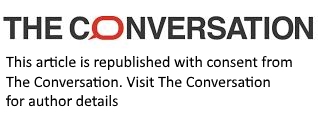
Reports in The Australian suggesting Treasurer Jim Chalmers has shelved his budget wellbeing framework, known as Measuring What Matters, are incorrect.
The framework is alive and well, and making steady (if slow) progress.
Also reported was the Coalition’s intention to scrap the framework if it wins the next election, with its treasury spokesman Angus Taylor quoted as saying the government should instead focus on “lower inflation and lower interest rates”.
The idea that we shouldn’t be thinking about broader measures of progress because we need to concentrate on what’s in front of us impoverishes our view of what’s possible.
It’s important to measure what matters
The cost of living is certainly paramount. But if all we ever do is address the issue immediately in front of us, we will forever stumble from one crisis to the next.
Actually, if we had had a wellbeing framework in place before the current cost of living crisis, it might have been less likely to develop.
Most of us would agree that the things in the government’s Measuring What Matters framework matter, such as security, prosperity and cohesiveness.
But some of the information in last year’s statement was dated, some dating back to the years before COVID.

Commonwealth Treasury
The framework has two parts: a measurement dashboard and a statement.
The dashboard presents data on 50 “key indicators” the treasury believes should supplement (although not replace) the standard measures of economic progress.
The statement is a report of the outcomes presented in the dashboard and of government progress toward embedding the framework in decision-making.
Last month Treasurer Chalmers announced responsibility for the dashboard would move from the treasury to the Bureau of Statistics and that the Bureau would get extra funding to run an expanded general social survey every year to improve the quality and timeliness of the data.
The statement would remain the responsibility of the treasury but would be released only every three years instead of annually. The next would be published in 2026 incorporating the first results from the bureau’s new survey.
Framework already kicking goals
Discovering we don’t collect regular and timely data on these important measures and then funding the Bureau of Statistics to do so is a demonstration that the framework is already having an impact.
The critical test will be how it is used to improve decision-making.
It hasn’t yet resulted in any radical change, but the ambition is substantial.
Shifting the way governments make decisions and allocate resources is hard, and it was was never going to be accomplished in a single year.
By handing over the data side of things to the Bureau of Statistics, the treasury will now, hopefully, be able to focus more on embedding the framework into decisions, including budget decisions.
Prioritising prevention
One of the things the treasury team is working on is how to better prioritise early intervention and prevention programs for Australians at risk. Such measures are hard to justify under the old budget rules, but can they can improve outcomes and save the government money in the long run.
International and Australian studies have identified four key ways of ensuring the government is working to deliver the kinds of outcomes we expect from it:
1. holistic thinking and breaking down silos between types of wellbeing
2. a long-term focus that includes consideration of future generations
3. emphasis on prevention to tackle the root causes of problems
4. including the people most likely to be affected by decisions in their design.
They are directed towards delivering the kind of society we want to live in and to do it smartly and efficiently within a budget context.
According to the framework, that’s a society that is healthy, secure, sustainable, prosperous and cohesive. The government remains on the case.
Authors: Warwick Smith, Honorary Fellow, School of Social and Political Sciences, The University of MelbourneRead more





